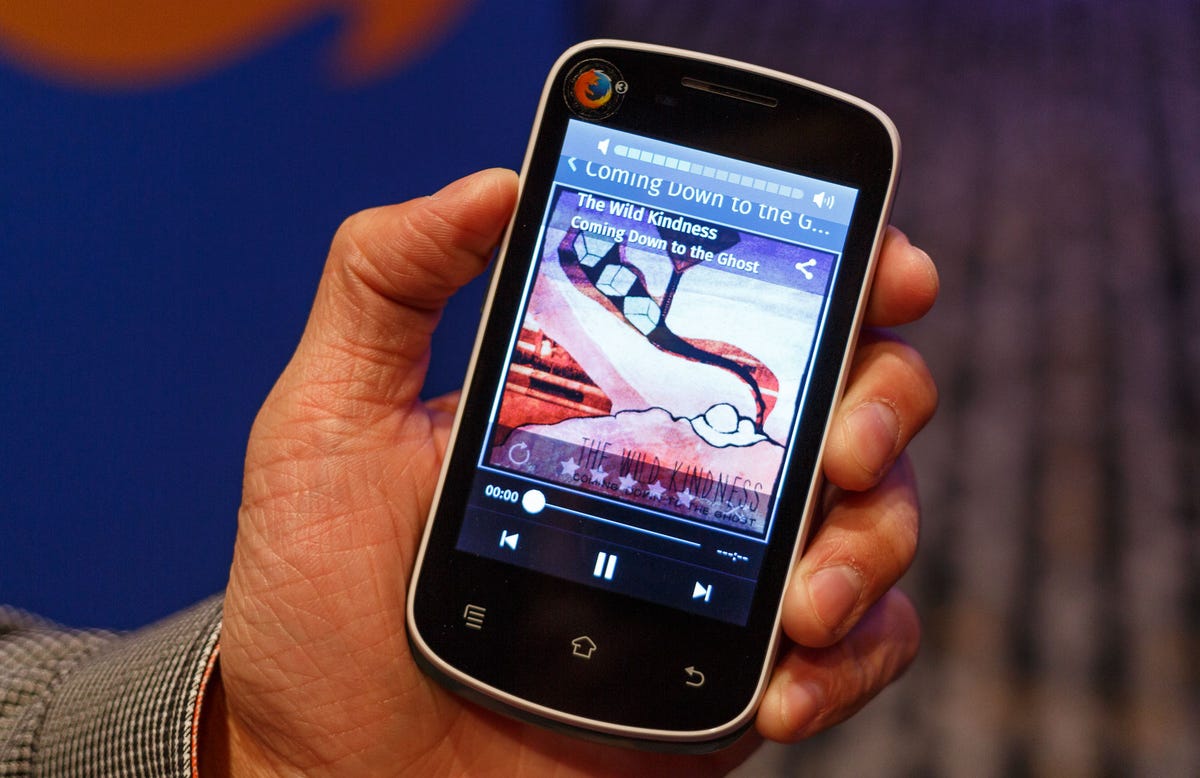
Stephen Shankland/CNET
Firefox OS, Mozilla’s ambitious attempt to establish a more open mobile operating system than Google’s Android or Apple’s iOS, is about to hit one of its biggest potential markets: India.
Two Indian companies, Intex and Spice, will build a super-cheap $25 Firefox OS phone based on a processor from Chinese company Spreadtrum and start selling them in the next few months.
“The platform will give us an edge in upgrading buyers from feature phones to smartphones while making it affordable for the mass market,” said Sanjay Kumar Kalirona, head of Intex’s mobile business, in a statement. Mozilla, a nonprofit organization committed to an open Web, announced the India move on Tuesday night in conjunction with the Mobile Asia Expo in Shanghai this week.
Firefox OS runs Web-based apps, and Mozilla hopes the approach will provide openness that’s not present in the mobile-technology ecosystems that have coalesced around Android and iOS. In those latter two environments, tight links bind together operating system, online services, app stores, and apps, making it harder for people to use alternatives once they’re lodged and invested. But iOS and Android dominate the market today, and programmers are lavishing resources on building apps that run natively there instead of Web versions that run everywhere.
Here’s another challenge: before smartphone users can get their hands on Web apps, someone has to create those apps, and that’s not an easy sell. Take the case of Matt Dimmick, the product leader for Telenav’s Scout navigation app for iOS, Android, and Windows Phone. The company had started tuning a lot of its apps to use Web technologies such as HTML, an approach that can make it easier to write software that runs on different operating systems, but then changed its mind to offer a faster app.
“We had a period of time where we started to go heavily into that, in particular with HTML5. We found you do get some big advantages, but at the end of the day, in most cases the advantages of native platform integration, from a performance standpoint, are usually worth doing the extra development work,” he said. “We pulled a lot of that [Web technology] back and reverted to native implementations.”
Mozilla, though, is aiming for super-cheap phones that customers will compare to feature phones that have only a handful of built-in apps, and the organization is convinced that Firefox OS will still carry the wow factor for that audience even if the hardware isn’t as impressive as a $600 iPhone or Samsung Galaxy S model.
Over time, Mozilla hopes to sell Firefox OS phones more widely in more developed markets, too; cost-consciousness isn’t a trait unique to developing countries. Indeed some partners in Germany, Spain, and Italy already offer Firefox OS models. But Android is stronger in first-world countries. In the US, phone maker ZTE has sold only 461 of its Open C Firefox OS phones through its eBay sales channel despite an affordable $100 price tag for an unlocked 3G phone.
Meanwhile, Chunghwa Telecom, the largest mobile network operator in Taiwan, has signed up with the Firefox OS cause, Mozilla announced Tuesday.
And it said two other Firefox OS phones announced at the Mobile World Congress show in February will go on sale in the summer: ZTE’s Open II and Alcatel’s One Touch Fire E .
Alcatel and ZTE are the handset makers with the longest partnership with Mozilla, each beginning inaugural sales of operating system with their first-gen phones in July 2013.



